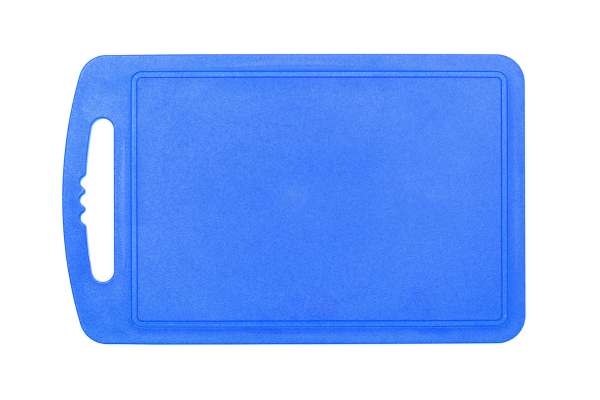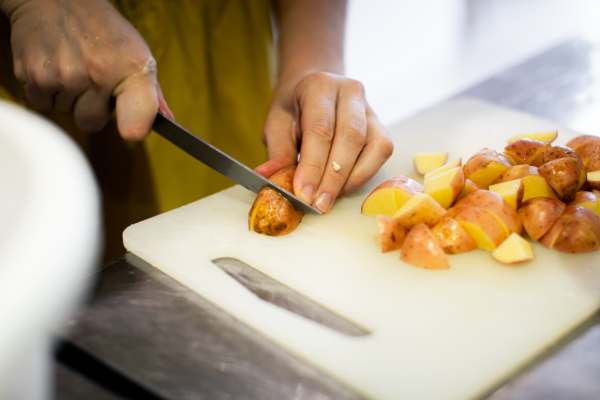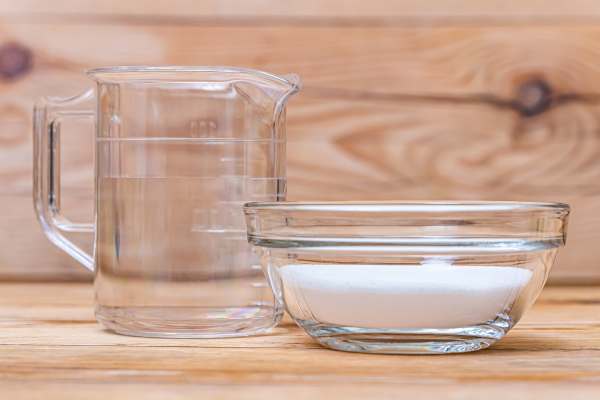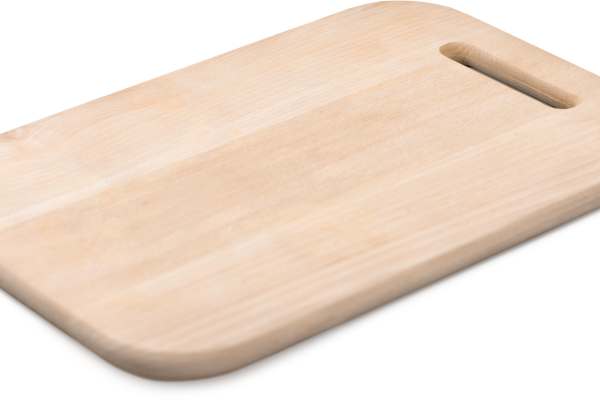A plastic cutting board is a staple in many kitchens, but it can easily become stained over time from foods like tomatoes and beets. Learning how to remove stains from plastic cutting board not only helps maintain its appearance but also ensures hygiene by eliminating bacteria trapped in the stains. Removing these stains is important because it prolongs the life of your cutting board and keeps your kitchen looking clean and professional. Fortunately, there are several effective methods to remove stains from plastic cutting board, including using common household items like baking soda, hydrogen peroxide, and even dish soap. In this guide, we’ll explore various techniques to help you restore your plastic cutting board to its original condition, making your kitchen a more pleasant and sanitary place.
How Often Should I Clean My Plastic Cutting Board?

To maintain hygiene and prevent cross-contamination, you should clean your plastic cutting board after each use. This is especially crucial when preparing raw meat, poultry, or fish, as bacteria from these foods can easily transfer to other items. For routine cleaning, wash the board with hot, soapy water, then rinse thoroughly and allow it to air dry. Regular cleaning helps keep your cutting board safe and extends its lifespan.
Can I Use Bleach On Plastic Cutting Boards?

Yes, you can use bleach on plastic cutting boards. It is an effective way to disinfect and remove stubborn stains. To do this, mix one tablespoon of unscented liquid bleach with one gallon of water, and soak the board in this solution for a few minutes. Rinse the board thoroughly with water and let it dry completely. Using bleach helps ensure your cutting board is free from harmful bacteria and safe for food preparation.
What’s The Best Way To Store My Cutting Board?

The best way to store your cutting board is in a clean, dry place to prevent moisture buildup, which can lead to bacterial growth. If possible, store it upright or on a rack to allow air circulation around the board. Avoid storing it in a damp or closed environment, as this can cause warping and increase the risk of mold. Keeping your cutting board in a well-ventilated area ensures it stays dry and sanitary.
Common Causes Of Stains
Plastic cutting boards can easily become stained from frequent use, particularly with highly pigmented foods such as berries, beets, and turmeric. Additionally, contact with acidic foods like tomatoes and citrus fruits can exacerbate staining over time. Even regular handling of meats can leave behind residues that stain if not cleaned promptly. Understanding these common causes is the first step in effectively maintaining the cleanliness and appearance of your plastic cutting boards.
Household Cleaning Agents
For everyday cleaning and light stains, household agents such as baking soda and vinegar work wonders. A simple paste made from baking soda and water can be applied to the stained areas, allowing it to sit for a few minutes before scrubbing gently with a brush or sponge. For more persistent stains, vinegar can be sprayed directly onto the board and allowed to sit before scrubbing. These agents are not only effective but also eco-friendly and safe for food contact surfacesialized Cleaning Products.
Specialized Cleaning Products
Using a dedicated cleaner designed for wood surfaces ensures that your beloved cutting board remains in pristine condition without risking damage that can arise from harsh chemicals. Products with ingredients like tea tree oil or vinegar naturally combat mold while nourishing the wood grain. As we become more conscientious about health and sustainability in our homes, opting for eco-friendly specialized cleaners not only addresses immediate cleanliness concerns but also promotes longer-lasting care for kitchen tools. So next time you find yourself wondering how to clean wooden cutting board mold, consider investing in specialized solutions that prioritize both hygiene and the integrity of your culinary workspace.
Applying Baking Soda

Baking soda is a versatile and natural solution for removing stains from plastic cutting boards. To use it, sprinkle a generous amount of baking soda over the stained areas, then add a few drops of water to create a paste. Gently scrub the paste into the stains with a soft cloth or sponge, focusing on the most discolored spots. Baking soda’s mildly abrasive nature helps lift stains without damaging the plastic, making it an excellent choice for regular maintenance.
Soft Bristle Brushes
For a more thorough cleaning, consider using soft bristle brushes to remove stains from your plastic cutting board. These brushes are gentle on the board’s surface while effectively dislodging food particles and stains. Use a brush with soft bristles to scrub the cutting board after applying a cleaning solution or baking soda paste. This method ensures a deeper clean, reaching into any grooves or crevices that may harbor stubborn stains.
Scrubbing Pads
Scrubbing pads are another valuable tool for removing stains from plastic cutting board. Opt for non-abrasive pads to avoid scratching the surface. Dampen the pad with a cleaning solution, such as dish soap or a mix of vinegar and water, and scrub the stained areas in a circular motion. The scrubbing pad’s texture helps lift and remove stains, while the cleaning solution works to dissolve any residues. This method is effective for general cleaning and maintaining the appearance of your cutting board.
Preventing Future Stains
To keep your plastic cutting board looking its best and to prevent future stains, consider adopting a few preventive measures. Always use separate cutting boards for different types of food, such as vegetables and meats, to avoid cross-contamination. Additionally, promptly clean the board after each use to prevent stains from setting in. Regularly applying a food-safe mineral oil can also help protect the surface from absorbing food residues and stains.
Choosing A Replacement Board

Even with the best care, plastic cutting boards can eventually become too stained or worn out. When it’s time to replace your cutting board, choose one that suits your needs and preferences. Look for boards made from durable plastic materials that are resistant to staining and easy to clean. A well-chosen replacement board will ensure continued hygiene and functionality in your kitchen, maintaining the high standards you’ve set for your food preparation surfaces.
The Final Thought
Removing stains from your plastic cutting board doesn’t have to be a daunting task. By utilizing common household items such as baking soda, vinegar, and lemon juice, you can effectively restore the board’s appearance without the need for harsh chemicals. Regular maintenance and proper cleaning techniques will also help prevent future stains from setting in. Whether you’re tackling stubborn marks or simply looking to maintain hygiene in your kitchen, these easy methods can make a significant difference.

